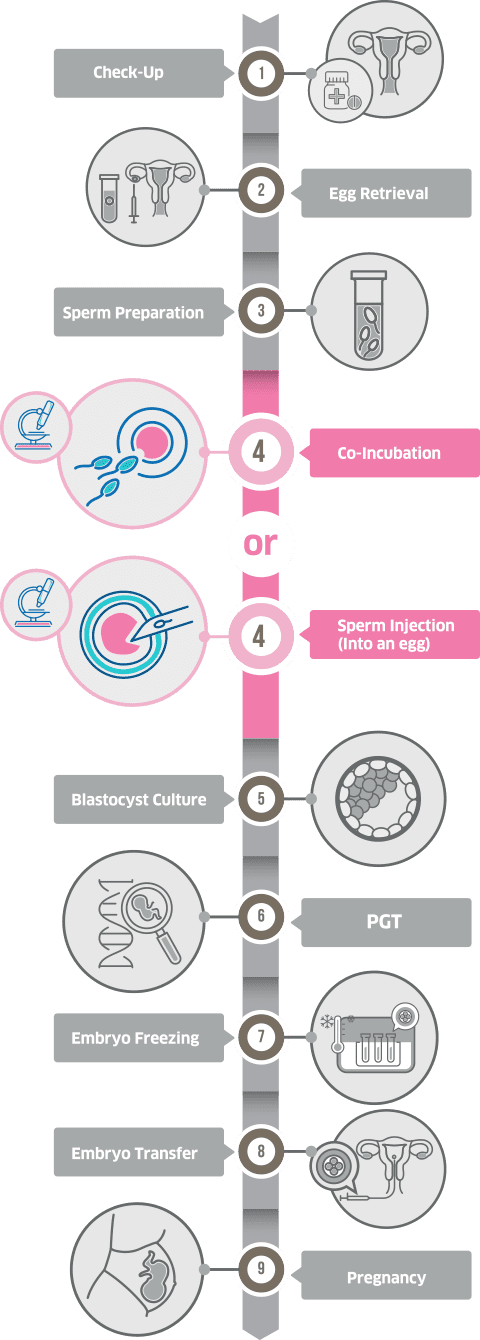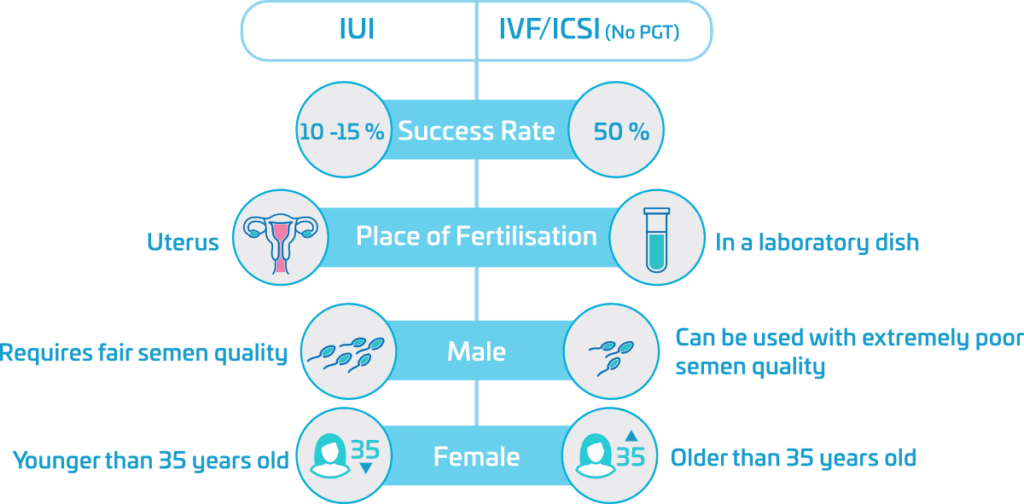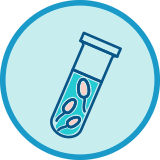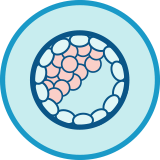IVF/ICSI
In Vitro Fertilization (IVF) and Intracytoplasmic Sperm Injection (ICSI)
IVF is an assisted reproduction option where eggs are extracted from a woman’s ovaries, sperm is retrieved from the male, and then the egg and sperm are combined in the laboratory to result in fertilization and an embryo. The resulting embryo will be grown and then transferred through the cervix into the woman’s uterus.
Fertilization Standard IVF
After washing and preparation a number of sperm are mixed with an egg in a laboratory dish. They are left a period of time to allow a sperm to fertilize, the fertilized egg is removed, washed and place in culture.
ICSI
ICSI is a different fertilization method to standard IVF. Instead of letting a number of sperm combine with an egg in a laboratory dish, in ICSI a single washed and selected sperm is picked up and injected directly into an egg.


Who Needs IVF?
IVF is a good option for many infertility problems, for example a woman with fallopian tube obstruction, diagnosed endometriosis, problems with egg release (ovulation), or couples with severe male sterility factor or an immunological infertility factor.
Who Needs ICSI?
ICSI is mostly used for patients who have an abnormally low sperm count, a high percentage of abnormal sperm and unhealthy sperm, or for couples who have experienced low fertilization rates with IVF. It is also used as International Standard Best Practices for PGD and PGS cases.









